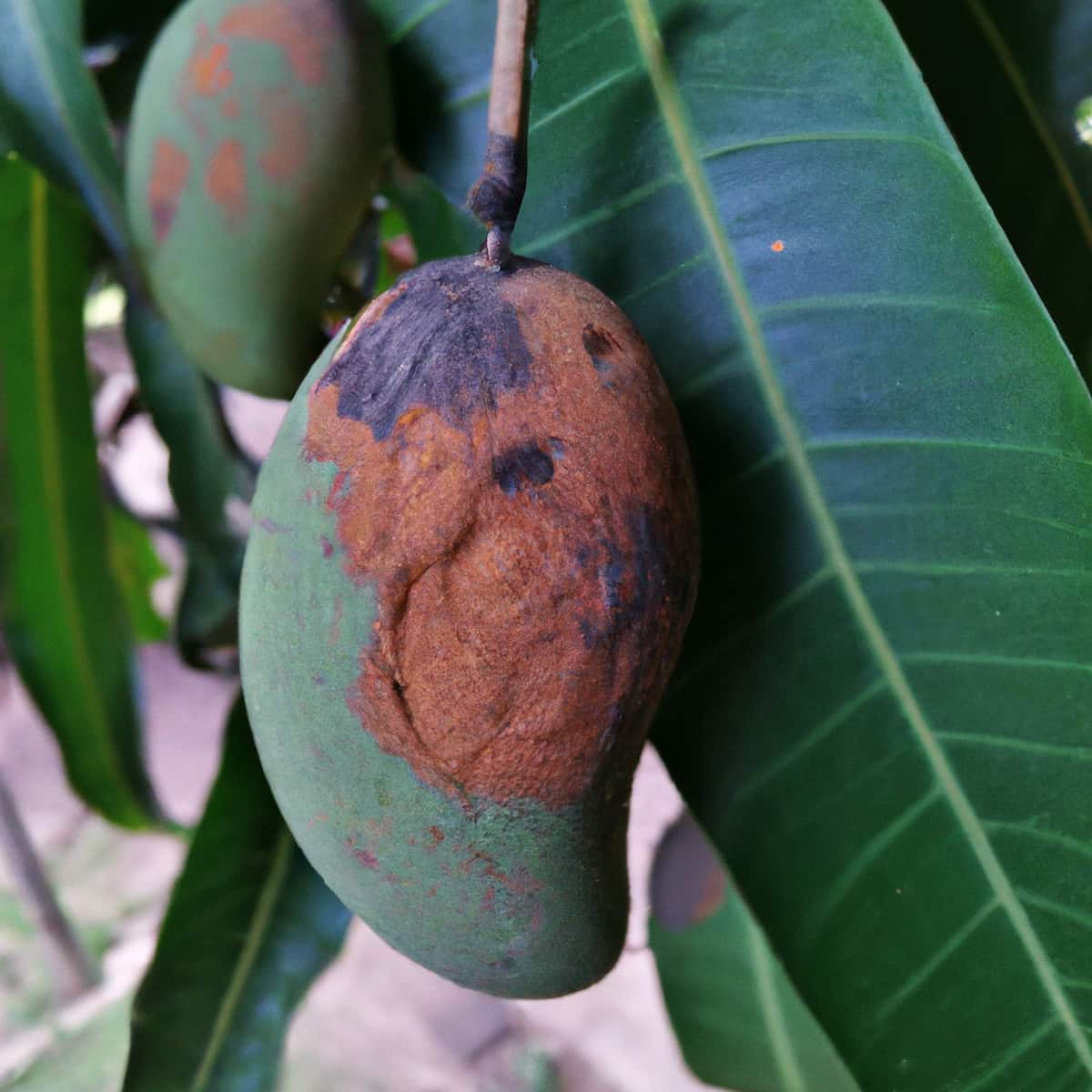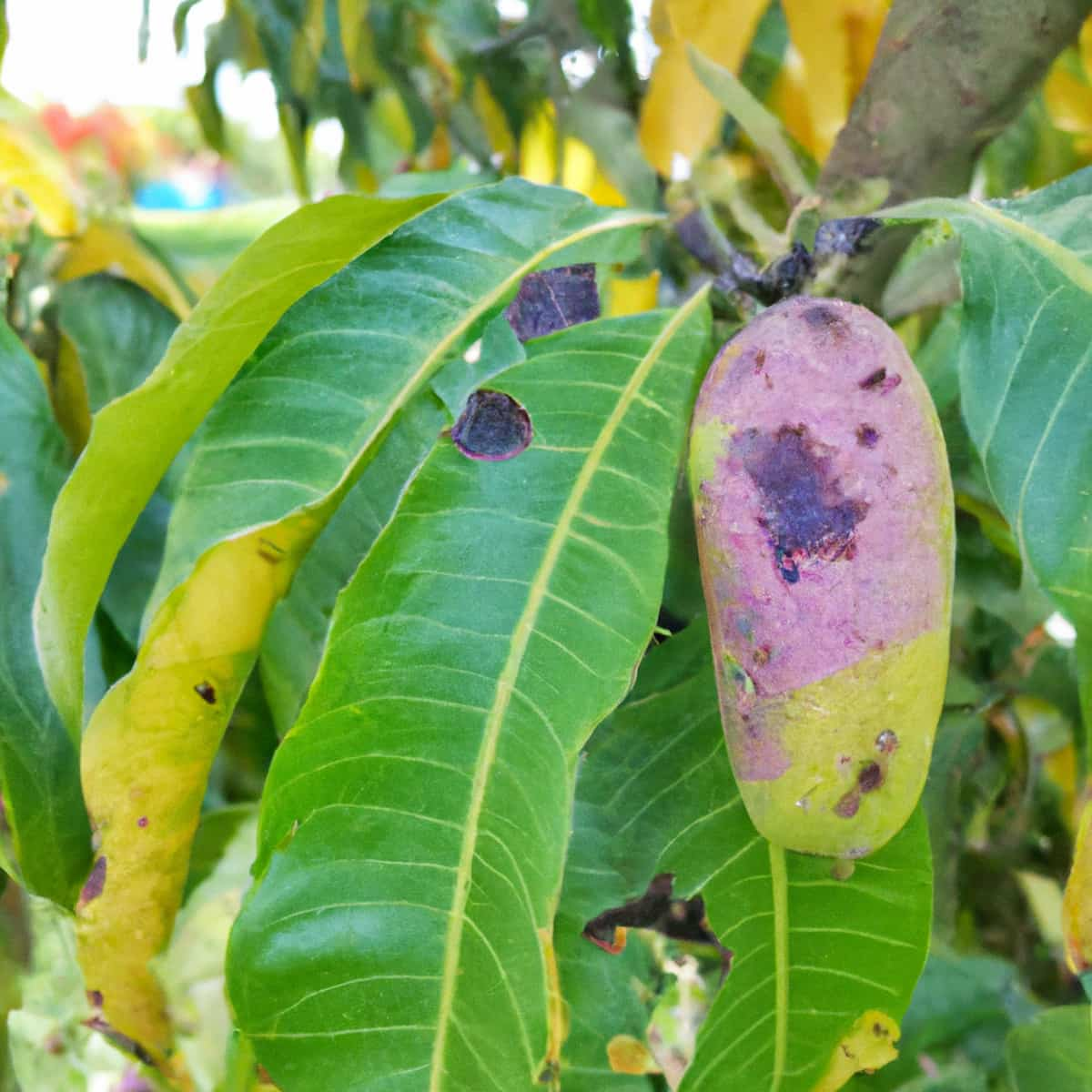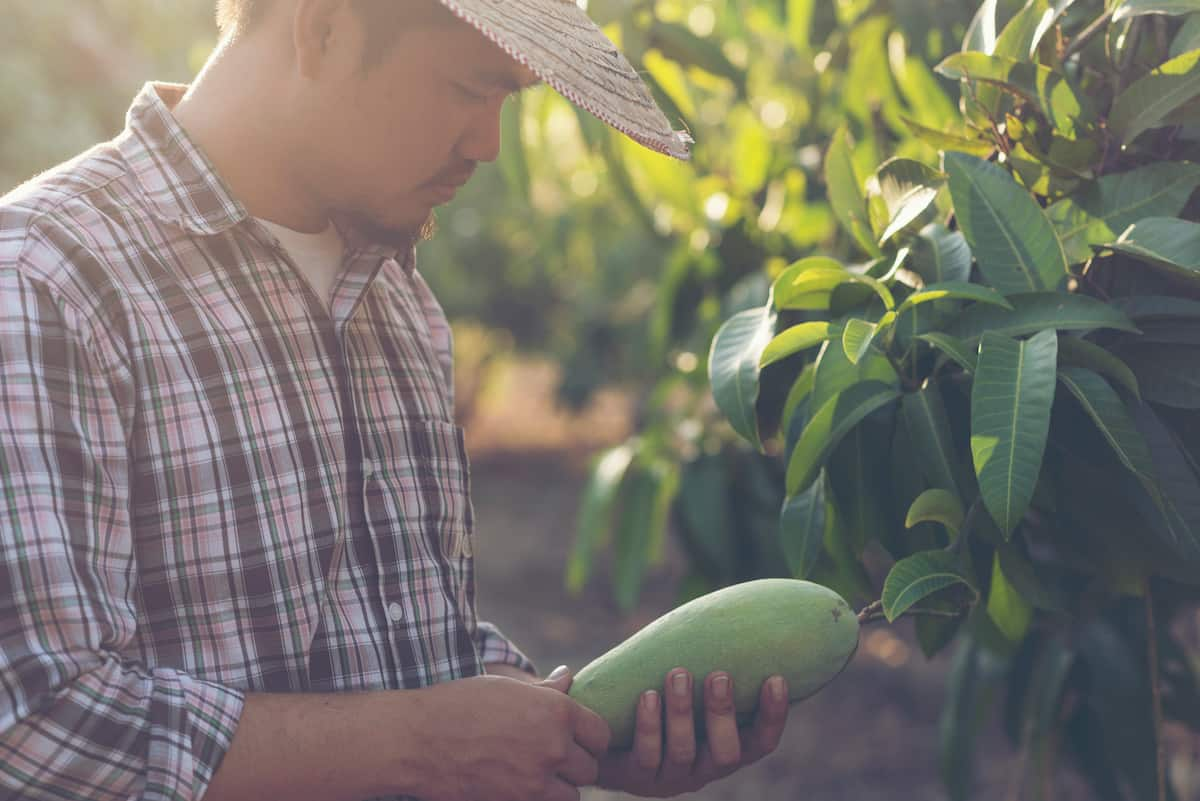The Mango Decline Disease caused by the fungus Ceratocystis manginecans is a serious threat to mango crops worldwide. The economic impact of Mango Decline Disease is significant, as it reduces fruit yield, quality, and marketability and can result in the complete loss of orchards. The disease can spread through infected plant material, tools, and machinery and persist in the soil for many years.

The management of the disease is challenging, as there are currently no effective chemical controls available. However, cultural practices such as pruning, sanitation, and the use of disease-free planting material can help reduce the incidence and spread of the disease. In addition, research is ongoing to develop resistant mango varieties and biological control measures to manage Mango Decline Disease.
To effectively manage this disease, it is important to understand its disease cycle, the mode of disease spread, and the best methods for controlling it. This article will provide an overview and discussion of the Mango Decline Disease in Mango crops, including its symptoms, identification techniques, and control.
Mango Decline Disease Management
The Causal Organism of Mango Decline Disease
- Ceratocystis manginecans is a filamentous saprophytic fungus that belongs to the Family Ceratocystidaceae of Order Microascales of the Phylum Ascomycota.
- The fungus produces conidia and ascospores.
- The conidia are hyaline (transparent) and cylindrical, measuring 3-5 μm in diameter and 15-30 μm in length.
- The ascospores are hyaline, oval to cylindrical, and measure 5-7 μm in diameter and 10-20 μm in length.
The Disease Cycle of Mango Decline Disease
The disease cycle of the Mango Decline Disease, Ceratocystis manginecans, in Mango Crops begins with the infection of the mango tree by C. manginecans. The fungus can enter the tree through mechanical injuries or natural openings, such as stomata or lenticels, and colonize the vascular system. The fungus can also survive in dead plant tissue and soil for long periods, making it challenging to eradicate.
Once inside the tree, the fungus colonizes the vascular system, blocking water and nutrient transport. This results in wilting and yellowing of the leaves, defoliation, and eventual death of the tree. Colonizing the vascular system can take several years, and symptoms may not be visible until the disease progresses.
The conidia are produced in small clusters on specialized structures called synnemata, which emerge through cracks or wounds in the tree’s bark. The ascospores are produced within fruiting bodies known as perithecia, which are embedded in the infected tissue and visible as black dots on the bark.
The spores are dispersed by wind, rain, and insects. The conidia can be spread over short distances, while the ascospores can be carried over longer distances. The spores can also be spread through infected plant material, tools, and machinery. Secondary infections can occur through wounds or natural openings, such as stomata or lenticels.
Occurrence of Mango Decline Disease in Mango Crop
- Location of Mango Decline disease: This disease occurs in mango crops in India, Africa, Bangladesh, Sri Lanka, Thailand, the Philippines, the United States, Mexico, Brazil, and Australia.
- Host range: The most common crops affected by Ceratocystis manginecans are mango, avocado, papaya, coconut, jackfruit, and breadfruit.
Favorable Conditions for Mango Decline Disease Spread in the Field
- Warm and humid conditions are favorable for infestation. The optimal temperature for fungal growth is around 28-30°C and more than 70% relative humidity.
- The fungus can also colonize healthy tissues and cause disease while the tree is under stress, such as during a nutrient deficiency, drought, or high temperatures.
- When the soil is poorly drained, water can accumulate in the root zone, leading to root rot, weakening the plant, and making it more susceptible to fungal infection.
- Pruning wounds and natural openings, such as stomata or lenticels, are the major sites of infection.
- Some insects, such as bark beetles, can also transmit the fungus from infected trees to healthy ones.
In case you missed it: Mango Root Rot and Damping-off Disease Management: Symptoms, Treatment, Chemical, Biological, and Organic Control

Damage Symptoms of Mango Decline Disease
- This disease is characterized by sudden wilting and yellowing of the leaves, defoliation, and eventual death of the tree.
- The leaves may turn brown or dark yellow and fall off prematurely. In severe cases, defoliation may occur, reducing photosynthesis and causing poor fruit quality.
- The fruits show premature ripening, fruit drop, and reduced size, with a corky layer on the surface, making them unsuitable for commercial purposes.
- The stems show signs of cracking and oozing of gum-like substances, indicating internal decay.
- Infected trees may develop root rot, reducing root growth and function and showing signs of decay, making it difficult for the tree to absorb nutrients and water.
- The pathogen enters through wounds, blocks the vascular system, and results in wilting and yellowing of the leaves, defoliation, and a gradual tree decline over several years until it dies.
Percentage of Yield Loss Due to Mango Decline Disease in Mango Crop
- The disease can cause 60% yield losses in the United States. In Mexico, yield losses are 20-50%. In India, the yield losses are 30-50%. In Bangladesh, the losses are 40-50%. In Sri Lanka, the losses are 50-70%. In China, a 20% yield loss is seen.
- In Africa, yield losses are 40%. In the Philippines, it is 20-50%. In Thailand, it is 40-50%. In Brazil, it is 30%. In Australia, the losses are 25%. The Economic Threshold Level is determined at 10% of defoliation.
Cultural Control Measures of Mango Decline Disease
- Remove alternate hosts like Gulmohar, Sareenh, Sheeshum, and Gular to prevent the disease incidence.
- Irrigation should be applied when the soil is dry, and the water should be applied slowly to avoid waterlogging.
- Proper pruning and training of mango trees can help to enhance good air circulation and light penetration within the orchard. It is essential to sanitize pruning tools between cuts to prevent the spread of the disease.
- Poorly drained soils are conducive to developing the Mango Decline Disease.
- The orchard should be kept clean by removing and burning all dead wood, pruned branches, and infected plant debris from the orchard.
Biological Control Measures of Mango Decline Disease
- Trichoderma spp. are beneficial fungi that colonize the root system and induce plant resistance against the pathogen.
- Bacillus spp. are beneficial bacteria that produce antimicrobial compounds that can inhibit the growth of the pathogen.
- Rhizobacteria are beneficial bacteria that can colonize the rhizosphere and enhance plant growth.
- Mycorrhizal fungi form a symbiotic connection with the roots of higher trees and help in nutrient uptake.
Chemical Control Measures of Mango Decline Disease
- Spray Mancozeb, Thiophanate-methyl, Carbendazim., Azoxystrobin, Pyraclostrobin, Tebuconazole, or Propiconazole to the foliage to control the fungus spread.
- These fungicides must be applied immediately after observing the disease to prevent further losses.
Organic Control Measures of Mango Decline Disease
- Spray Copper-based fungicides, such as copper sulfate and copper hydroxide. They interfere with the fungal cell enzyme systems, leading to fungal death.
- Tea tree oil, clove oil, and cinnamon oil disrupt the pathogen’s cell membrane, causing it to die.
- Plant extracts, such as extracts from neem, ginger, garlic, and turmeric leaves, are used as foliar spray or incorporated into the soil to suppress the disease.
Preventive Measures for Control of Mango Decline Disease
- Soil fumigation using chemicals such as methyl bromide or chloropicrin can effectively control the disease.
- Soil solarization coves the soil with clear plastic for a few weeks during the hot summer and can also help reduce disease-causing fungi.
- Avoid planting mango trees in low-lying areas where water tends to accumulate, as this can promote the growth and spread of the fungus.
- Always use sterilized and disinfected pruning equipment to prevent the spread of the disease to new trees.
- Avoid planting mango trees too close to each other, as this can spread the disease.
- Regularly monitoring the crops for signs of disease will help to find and manage the disease early before it spreads.
In case you missed it: Mango Grey Blight Disease Management: Symptoms, Treatment, Chemical, Biological, and Organic Control

Conclusion
The Mango Decline Disease caused by Ceratocystis manginecans is a significant threat to mango production and causes substantial economic losses. Integrated disease management involves a combination of measures such as soil and site management, sanitation, cultural practices, chemical control, and resistant varieties. By combining different control measures, farmers can effectively control the spread of the disease, ensuring the sustainability of mango production for generations to come.
- Types of Fungicides Used in Agriculture
- Common Issues in the Fruit Development Stage of Pomegranate Farming
- Fruit Development Issues in Papaya: Easy Solutions and Treatment
- Soil-Borne Diseases and How to Protect Your Plants
- Practices to Prevent Disease Spread in the Garden
- From Wilted to Thriving: How to Treat Root Rot Naturally in Houseplants
- Natural Remedies to Cure Brown Spots on Fig Tree Leaves
- Natural Solutions for Poinsettia Problems: 100% Effective Remedies
- How to Control Calla Lily Problems: Natural Remedies for Leaf and Flower Problems